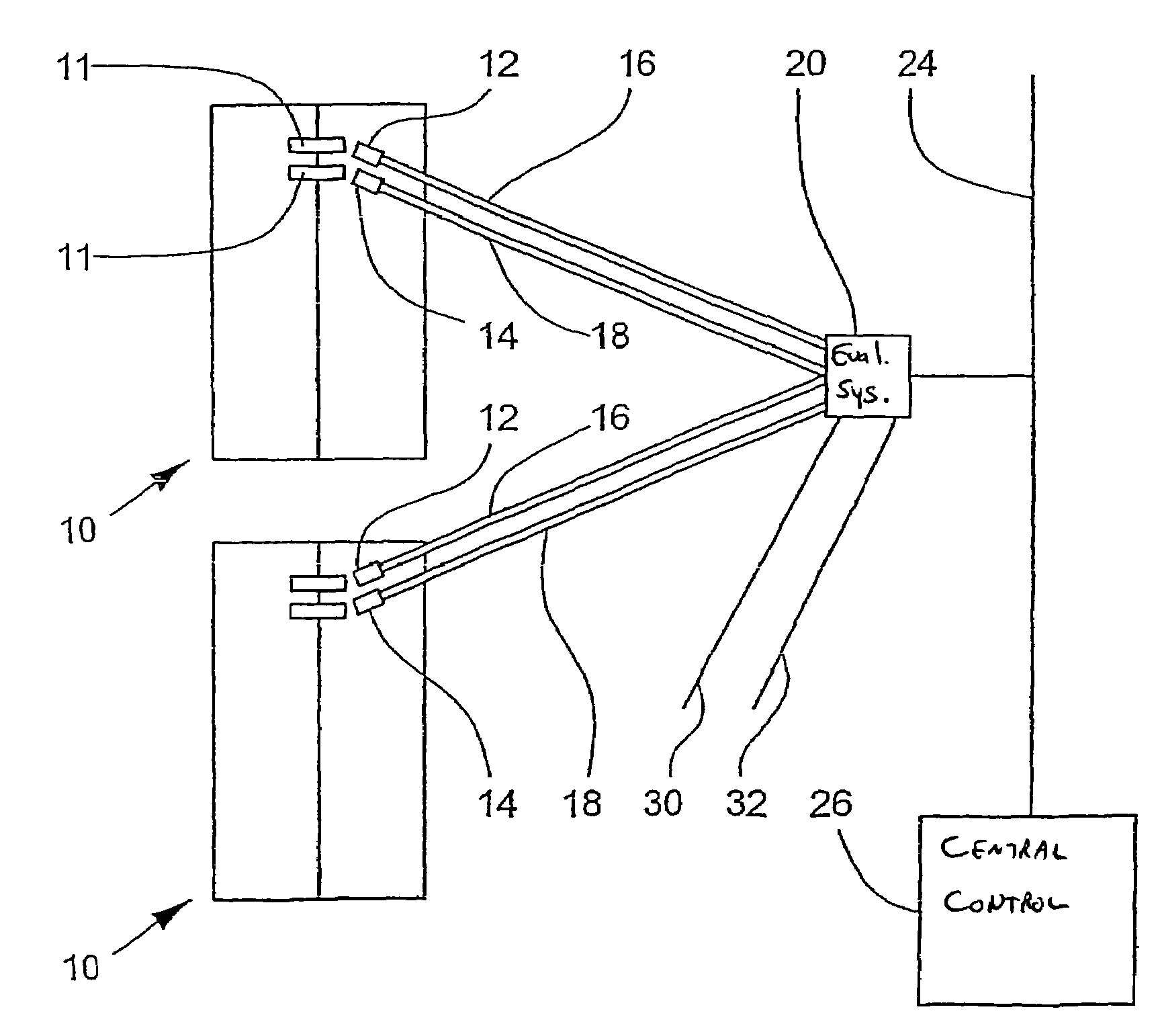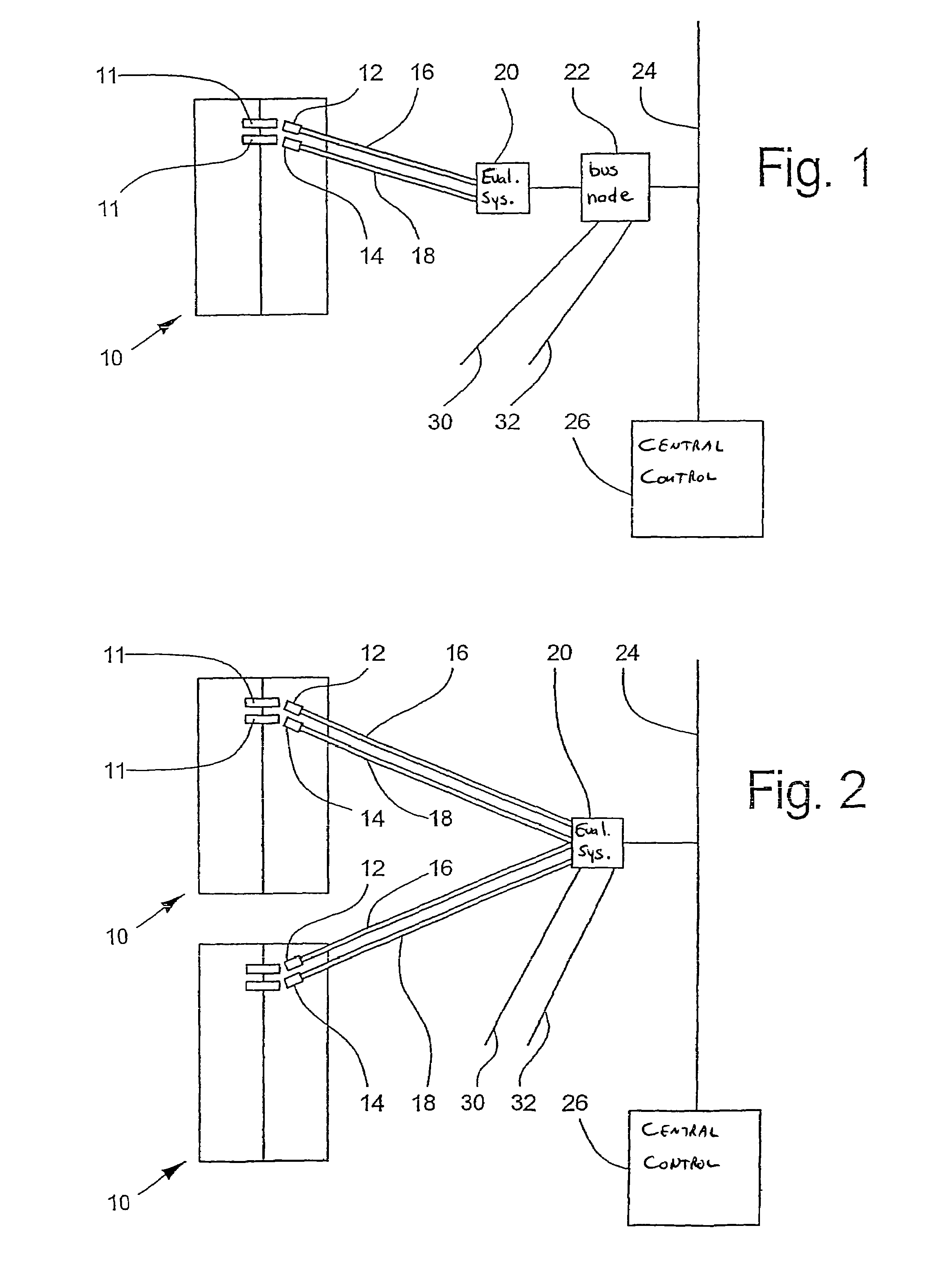Elevator door monitoring system
a technology for monitoring systems and elevators, applied in elevators, transportation and packaging, building lifts, etc., can solve the problems of reducing the voltage in the safety circuit, the length of the connection, and the relatively high assembly cost of individual safety contacts, so as to achieve the effect of reducing the risk of failur
- Summary
- Abstract
- Description
- Claims
- Application Information
AI Technical Summary
Benefits of technology
Problems solved by technology
Method used
Image
Examples
Embodiment Construction
[0029]FIG. 1 shows an arrangement with decentralized evaluation. A lift system, which is not illustrated in more detail, comprises a door 10, which can be a shaft door or a cage door. Sensor means, namely a first sensor means 12 and a second sensor means 14, are associated with the door 10. Each of the sensor means12, 14 has one or more sensors (not shown) which, in the present example of embodiment, are constructed as switches and are actuable by way of door elements 11. The sensor means 12, 14 are connected by way of connections 16, 18 to an evaluating system 20 which is intended only for the evaluation of the signals of the door 10. The evaluating system 20 is connected by way of a bus node 22 to a data bus 24, which is connected to a central control 26. In addition to the signals delivered by the sensor means 12, 14, other signals, i.e. other lift magnitudes, are connected to the bus node 22 by way of further connections 30, 32; in addition, a connection to the evaluating system...
PUM
 Login to View More
Login to View More Abstract
Description
Claims
Application Information
 Login to View More
Login to View More - R&D
- Intellectual Property
- Life Sciences
- Materials
- Tech Scout
- Unparalleled Data Quality
- Higher Quality Content
- 60% Fewer Hallucinations
Browse by: Latest US Patents, China's latest patents, Technical Efficacy Thesaurus, Application Domain, Technology Topic, Popular Technical Reports.
© 2025 PatSnap. All rights reserved.Legal|Privacy policy|Modern Slavery Act Transparency Statement|Sitemap|About US| Contact US: help@patsnap.com


